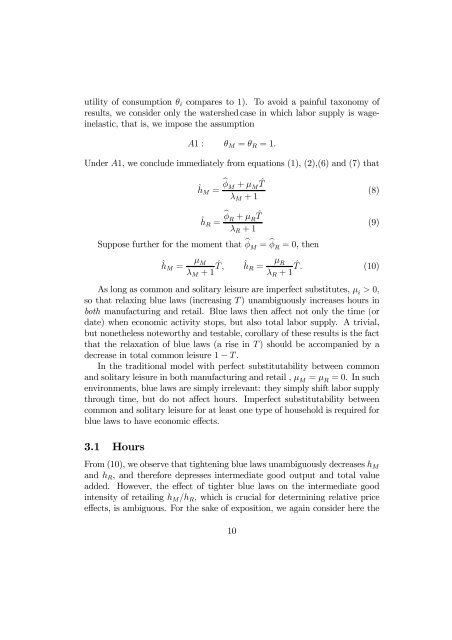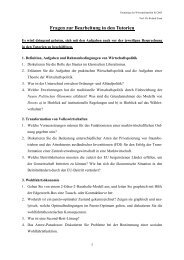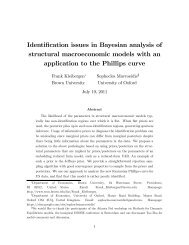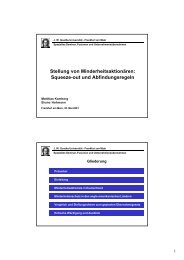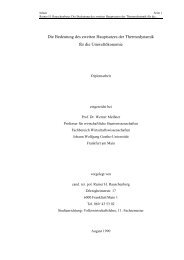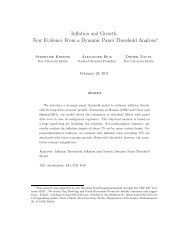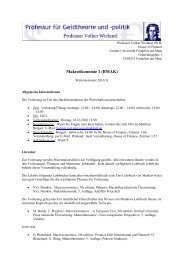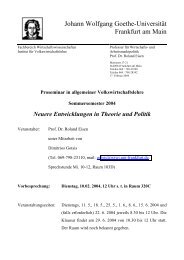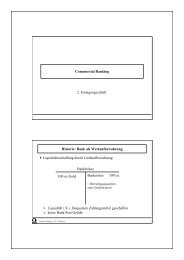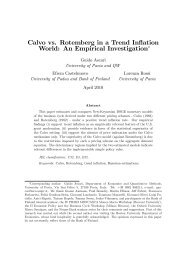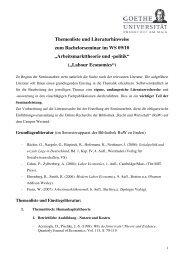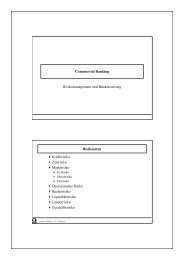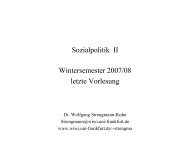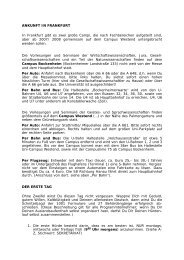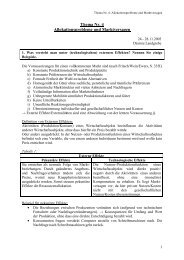Michael Burda - Sciences Po Spire
Michael Burda - Sciences Po Spire
Michael Burda - Sciences Po Spire
Create successful ePaper yourself
Turn your PDF publications into a flip-book with our unique Google optimized e-Paper software.
utility of consumption θi compares to 1). To avoid a painful taxonomy of<br />
results, we consider only the watershed case in which labor supply is wageinelastic,<br />
that is, we impose the assumption<br />
A1 : θM = θR =1.<br />
Under A1, we conclude immediately from equations (1), (2),(6) and (7) that<br />
ˆhM = b φ M + µ M ˆT<br />
λM +1<br />
ˆhR = b φR + µ ˆT R<br />
λR +1<br />
Suppose further for the moment that b φM = b φR =0,then<br />
(8)<br />
(9)<br />
ˆhM = µ M<br />
λM +1 ˆ T, ˆ hR = µ R<br />
λR +1 ˆ T. (10)<br />
As long as common and solitary leisure are imperfect substitutes, µ i > 0,<br />
so that relaxing blue laws (increasing T ) unambiguously increases hours in<br />
both manufacturing and retail. Blue laws then affect not only the time (or<br />
date) when economic activity stops, but also total labor supply. A trivial,<br />
but nonetheless noteworthy and testable, corollary of these results is the fact<br />
thattherelaxationofbluelaws(ariseinT ) should be accompanied by a<br />
decrease in total common leisure 1 − T .<br />
In the traditional model with perfect substitutability between common<br />
and solitary leisure in both manufacturing and retail , µ M = µ R =0.Insuch<br />
environments, blue laws are simply irrelevant: they simply shift labor supply<br />
through time, but do not affect hours. Imperfect substitutability between<br />
common and solitary leisure for at least one type of household is required for<br />
blue laws to have economic effects.<br />
3.1 Hours<br />
From (10), we observe that tightening blue laws unambiguously decreases hM<br />
and hR, and therefore depresses intermediate good output and total value<br />
added. However, the effect of tighter blue laws on the intermediate good<br />
intensity of retailing hM/hR, which is crucial for determining relative price<br />
effects, is ambiguous. For the sake of exposition, we again consider here the<br />
10


